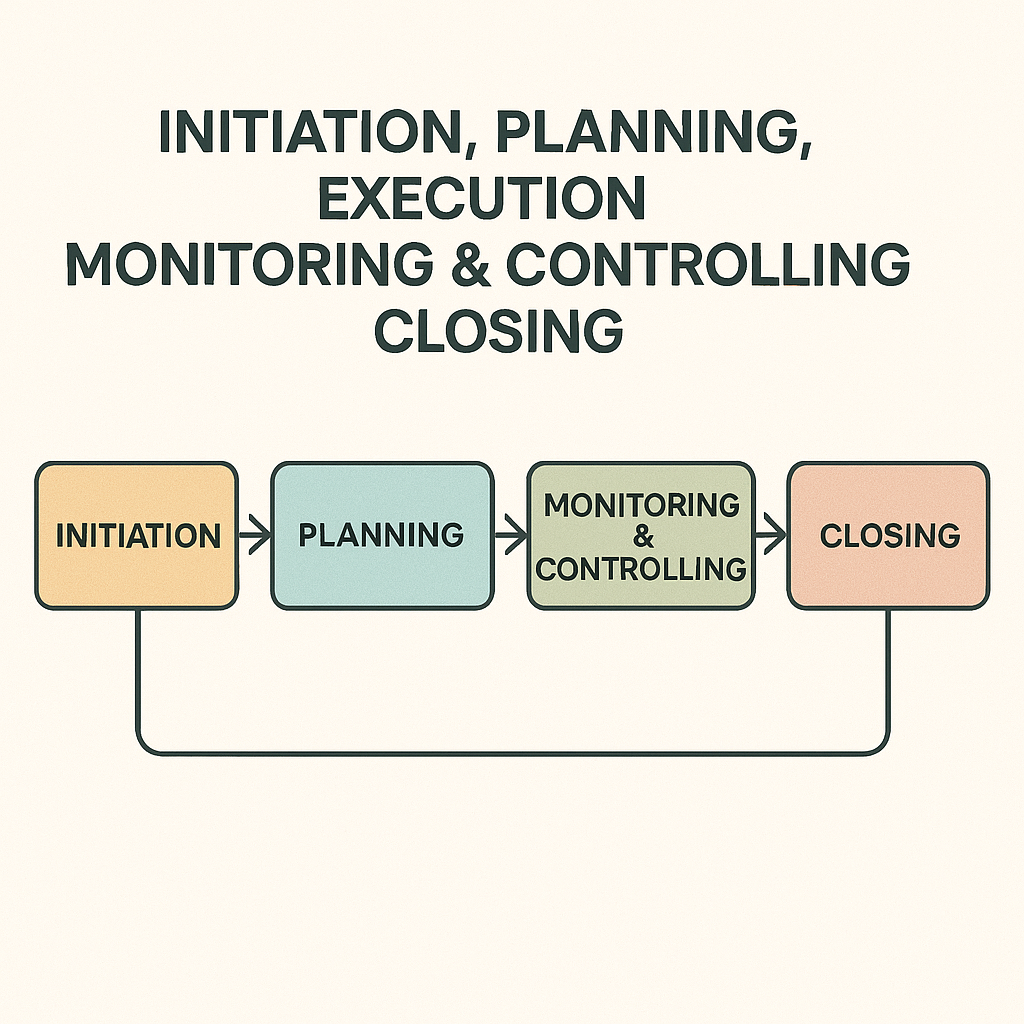
Predictive project management also known as traditional project management / waterfall model, is an approach used to plan, execute, monitor&control and close projects whose scope is well defined upfront, technology used is familiar to the team and making changes late in the project is difficult and expensive. Most of the construction projects fall into this category.
Predictive project management is also known as traditional project management or waterfall model. Predictive projects passes through logical phases (project life cycle) of;
- Conceptualisation
- High level design
- Detailed scoping
- Low level design
- Construction
- Closure
- Handover
- Each pase is dependent on the successful completion of the previous phase, hence the name waterfall.
Project management life cycle
In predictive project management, project management typically progress through a series of sequential phases;
- Initiation: This phase involves defining the project’s purpose, objectives, and initial scope. Key activities include creating a project charter, identifying stakeholders, and conducting a feasibility study to assess the project’s viability.
- Planning: During this phase, detailed plans are developed to guide project execution. This includes creating a project management plan, defining scope, establishing a work breakdown structure (WBS), developing schedules, allocating resources, and identifying risks.
- Execution: The execution phase involves implementing the plans created during the previous phase. This includes coordinating resources, managing stakeholder expectations, and performing the work outlined in the project plan.
- Monitoring and Controlling: Throughout the project lifecycle, progress is monitored against the project management plan, and adjustments are made as necessary to keep the project on track. This phase involves tracking performance, managing changes, and addressing issues and risks as they arise.
- Closing: The closing phase involves finalizing all project activities and formally closing out the project. This includes obtaining acceptance from the customer or sponsor, completing any remaining deliverables, releasing project resources, and documenting lessons learned for future projects.
These phases provide a structured framework for managing projects from initiation to closure, with each phase building upon the previous one to ensure the successful completion of the project.
While predictive project management can provide a structured framework for planning and executing projects, it may not be well-suited for projects with high levels of uncertainty or rapidly changing requirements. In such cases, an agile or iterative approach may be more appropriate.
